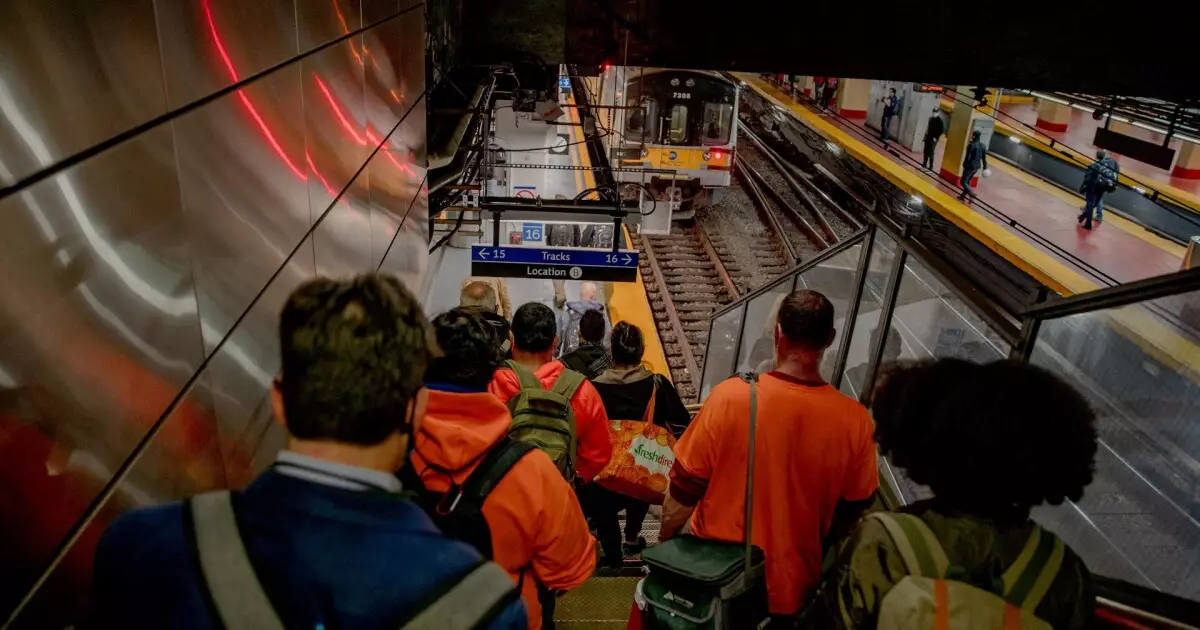7 Billion Reasons to Reimagine Penn Station: A Bold Move or a Draining Debacle?

The recent shift in leadership for New York’s ambitious $7 billion renovation of Pennsylvania Station marks a significant turning point that some may see as a welcome departure from the entrenched status quo. With the Trump administration stepping in to take control from the Metropolitan Transportation Authority (MTA), we should consider whether this is a triumph of pragmatism or an unwarranted federal overreach. While some praise the government’s efforts to streamline the overhaul of such an iconic structure, others fear the ramifications this centralization could have for local governance and accountability.
Federal Transportation Secretary Sean Duffy’s announcement about the Federal Railroad Administration (FRA) replacing the MTA with Amtrak has stirred quite the pot. Though Duffy’s oneshot declaration includes a federal funding reduction aimed at saving taxpayers a projected $120 million, skepticism looms large over whether such measures will be effective. New York Governor Kathy Hochul sounds a victorious tone, celebrating the rescission of MTA control. Yet, one must ask: Are we truly witnessing the dawn of a beautiful new station, or merely pivoting on the whims of those in power?
Rhetoric vs. Reality: The Unraveling Congestion Pricing Saga
Let’s not overlook the elephant in the room—congestion pricing and the MTA’s escalating tensions with the Trump administration. Amid the $7 billion station revival, the MTA is wrestling with the Trump administration over proposed tolls for driving into certain parts of Manhattan. The deadline for compliance looms ominously, and President Trump’s uncompromising stance against MTA inefficiency exemplifies his broader agenda of curtailing wasteful spending. The administration claims it is forcing much-needed accountability, but the question remains: Is Paul being robbed to pay Peter?
Duffy’s threats to withhold federal funding to pressure the MTA into providing information on transit crime suggest an alarming tactic often taken to condense complex issues into reductive battles of authority. The rhetoric portrays the MTA as bogged down by inefficiency, yet the agency claims success stories with its recent renovations. Shouldn’t the focus instead be on collaboration? Ignoring the intricate local landscape in favor of blanket federal mandates could create a rift that makes transformation harder, not easier.
The Vision of a Revamped Penn Station: A Mixed Bag
The aspirations for the reimagined Penn Station are certainly ambitious. A new 250,000 square-foot facility promised is filled with hope—retail spaces, improved amenities, and even mixed-income housing. Yet these plans seem fogged by a veil of political machinations. Will the new overseers prioritize the needs of New Yorkers, or will the echo of federal bureaucratic dominance drown out the local voices that should shape this initiative?
Besides the immediate impact on commuting habits, this overhaul reaches into the deeply rooted socio-economic fibers of the area. By promoting mixed-income housing within the station’s commercial prowess, there are dreams of inclusive development. However, such grand designs can easily become mired in execution if oversight slips into the hands of those motivated more by the optics of success than by its genuine delivery.
In a landscape where taxpayer dollars and political posturing collide, the future of Penn Station’s makeover hangs precariously in the balance. While the Federal Government’s entry may bolster efforts to renovate this pivotal transit hub, one cannot overlook the substantial local context being overshadowed by the ambition of federal action. Will we see a paradigm shift where accountability is retained without sacrificing local control? Or will the quest for a stunning Penn Station unravel into an expensive puppet show—one funded by taxpayer dollars but driven by a remote agenda? Only time will tell whether this shift is the beginning of a new chapter or merely a fleeting illusion.





